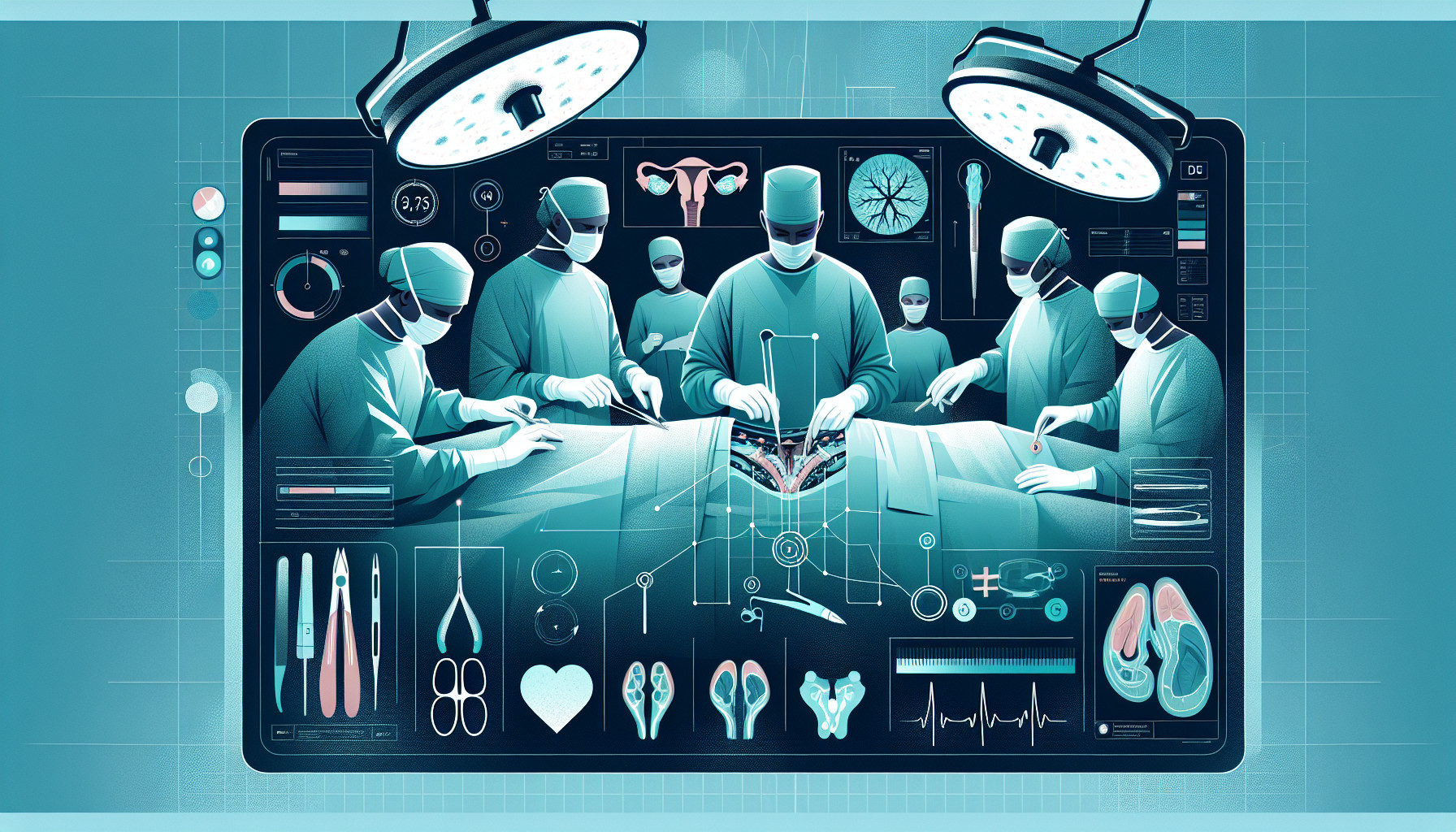Our Summary
This research paper discusses a surgical procedure for testicular cancer known as laparoscopic retroperitoneal lymphadenectomy (RLA). This method, which was proven effective over 25 years ago, is less harmful than traditional open surgery. Initially, it was used for early stage testicular cancer but has been largely replaced by chemotherapy in Europe. However, it is now being used for smaller, one-sided residual tumors that remain after chemotherapy. The paper provides a detailed description and video of this surgical technique. The latest development in this field is using laparoscopic RLA for larger residual tumors which are more than 5 cm.
FAQs
- What is the laparoscopic retroperitoneal lymphadenectomy (RLA) surgical procedure?
- Is laparoscopic RLA used for early or late-stage testicular cancer?
- What are the latest developments in laparoscopic RLA for treating testicular cancer?
Doctor’s Tip
One helpful tip a doctor might tell a patient about testicular surgery is to follow post-operative care instructions carefully, including keeping the area clean and dry, avoiding heavy lifting or strenuous activity, and taking any prescribed pain medication as directed. It is also important to attend follow-up appointments to monitor healing and address any concerns promptly. Additionally, patients should be aware of any potential signs of infection, such as increased pain, redness, or swelling, and contact their healthcare provider if they experience any of these symptoms.
Suitable For
Patients who are typically recommended for testicular surgery include those with testicular cancer, particularly those with residual tumors that remain after chemotherapy. This includes patients with smaller, one-sided residual tumors as well as those with larger residual tumors that are more than 5 cm in size. Additionally, patients with other testicular conditions such as testicular torsion, testicular trauma, testicular cysts, or testicular masses may also be recommended for surgical intervention. It is important for patients to consult with their healthcare provider to determine the most appropriate treatment plan for their specific condition.
Timeline
Before the surgery:
- Patient is diagnosed with testicular cancer through physical examination, blood tests, and imaging studies.
- Patient undergoes discussions with their healthcare team to determine the best treatment plan, which may include surgery, chemotherapy, radiation therapy, or a combination of these.
- Patient undergoes pre-operative evaluations, such as blood tests, chest X-rays, and electrocardiograms, to ensure they are healthy enough for surgery.
- Patient receives instructions on how to prepare for the surgery, such as fasting before the procedure and stopping certain medications.
During the surgery:
- Laparoscopic retroperitoneal lymphadenectomy is performed by a surgical team using small incisions and a camera to remove lymph nodes in the abdomen and pelvis.
- The surgery typically takes several hours and the patient is under general anesthesia.
- The removed lymph nodes are sent to a pathology lab for examination to determine if they contain cancer cells.
- The patient is monitored closely in the recovery room before being transferred to a hospital room for post-operative care.
After the surgery:
- Patient may experience pain, swelling, and discomfort in the surgical area, which can be managed with pain medication and rest.
- Patient will need to follow instructions from their healthcare team on wound care, activity restrictions, and follow-up appointments.
- Patient may undergo further treatment, such as chemotherapy or radiation therapy, depending on the results of the lymph node examination.
- Patient will have regular follow-up appointments with their healthcare team to monitor their recovery and check for any signs of cancer recurrence.
What to Ask Your Doctor
- What specific type of testicular surgery are you recommending for me?
- What are the potential risks and complications associated with this surgery?
- How long is the recovery period after this surgery?
- Will I need any additional treatments or follow-up care after the surgery?
- What is the success rate of this surgical procedure for treating testicular cancer?
- Are there any alternative treatment options available for me?
- How many of these surgeries have you performed, and what is your success rate?
- Will I experience any changes in fertility or sexual function after this surgery?
- How long will I need to stay in the hospital after the surgery?
- What can I do to prepare for the surgery and improve my chances of a successful outcome?
Reference
Authors: Lusuardi L, Kunit T, Janetschek G. Journal: J Endourol. 2018 May;32(S1):S97-S104. doi: 10.1089/end.2018.0164. PMID: 29774821
